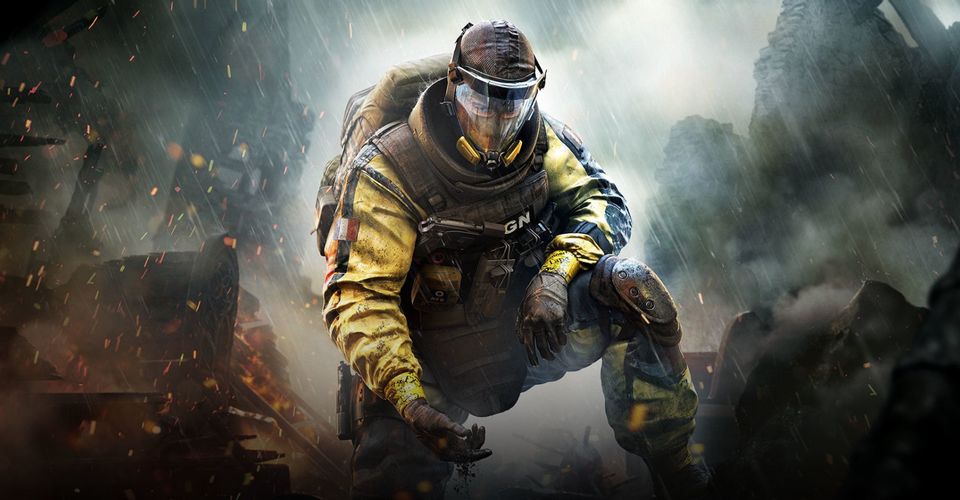Rainbow Six Siege: What Went Wrong

Rainbow Six Siege has had an impressive six-year run, but it hasn’t been without its share of issues. The game offers incredibly rich tactical shooter gameplay with a deep meta dependent on teamwork, and its long lifespan is a testament to how wonderful Siege can be. Unfortunately, the game also has a host of persistent problems, and now more than ever feels to be on the decline, especially with the imminent release of a spin-off, Rainbow Six Extraction, seemingly unwanted by the core player base.
The Rainbow Six series, based on the fictitious international counter-terrorism unit created by Tom Clancy, has a long history of mainly single-player shooters, though it did have its fair share of popular multiplayer modes, including the fan-favorite Terrorist Hunt. Rainbow Six Siege was an ambitious reinvention of the series which prioritized PvP multiplayer over PvE co-op. Instead of a single-player campaign, Siege launched with a handful of Situations designed to prepare the player for the main attraction, its intense multiplayer mode.
Though there are multiple game types in Siege, the game predominantly focuses on a five versus five set-ups where one team defends and the other attacks. Health is limited, weapons are accurate – with headshots resulting in insta-death at any range – and each of the game’s Operators has a unique ability and loadout. The cutthroat nature of the gameplay did manage to cultivate an esports community, and the game, in general, is considered very competitive. The game continues to receive support from Ubisoft, which claims a Rainbow Six Siege sequel is unnecessary, meaning the game will likely continue until the player base almost completely dies out. Near the end of the game’s sixth year, this is starting to feel like an inevitability, since the game is notoriously unapproachable and has seemingly been driving away longtime players for a myriad of reasons.
Rainbow Six Siege’s Rough Launch & Incredible Comeback

In general, when Rainbow Six Siege arrived in December 2015, it was well-received. The gunplay was satisfying and the concept was novel. It provided a tense experience with its single life rounds not unlike Counter Strike, but simultaneously embraced the burgeoning hero shooter genre with character-specific abilities akin to Overwatch (which released after Siege, but is an archetypal hero shooter). Siege initially received some criticism because of its lack of content and its underwhelming single-player and co-op options, but the potential was easy to see. The attacker/defender dynamic, short time-to-kill, destructible environments, and necessity of team communication (which includes the highest rate of swears per hour of any video game) and cooperation made it one of the more interesting multiplayer shooters available.
According to Steam Charts, Siege didn’t have a tremendous amount of success in its first year. Numerous bugs plagued the game, but the most overtly detrimental factor was server issues. It often took a long time to find a game, and disconnecting in the middle of a match was not uncommon. Ubisoft was determined to support Siege in the long term, though. In the game’s second year, instead of the normal content drop for Year 2 Season 2, Ubisoft announced that development resources would all go toward what was being dubbed Operation Health, a then-new Siege operation designed to implement numerous quality-of-life updates. Better server performance was a priority alongside bug fixes and future-proofing the game so that fewer issues would crop up later.
Though it’s probably only one contributing factor, and was constantly on the receiving end of jokes from the player base, Operation Health was a turning point for Siege. Prior to June 2017 when Operation Health began, Siege surpassed a mostly average of 30,000 players on Steam only once. Before the following season even began, in August of 2017, Siege exceeded 30,000 average players on Steam a second time, and would never again fall below that line. Not only was its newfound success a remarkable achievement for Ubisoft and the developers, but it was also a testament to the potential of a game as a live service.
Operation Health Didn’t Fix All Of Rainbow Six Siege’s Issues

The three years following Operation Health might be considered the golden age of Rainbow Six Siege. For a competitive shooter like Rainbow Six Siege, PC was the target platform, and the average monthly player count on Steam grew continuously until it reached an impressive 119,000 in March of 2020. That month marked the beginning of its fifth in-game year. With the addition of new operators Iana and Oryx, the original roster of 20 Operators had more than doubled to 54. By this time, new maps were fewer and farther between. In fact, a new map hasn’t been added to Siege since March of 2019, with existing ones being reworked for competitive balance instead. This theme would spread to Operators as well, with Year 5 Season 4 setting a new precedent compared to previous Rainbow Six Siege seasons with only one new Operator instead of two.
This slowing of content wasn’t unilaterally bad; many players had long been expressing concerns over a bloated Operator roster, and most of the map reworks were well-received. With so many Operators, all with their special abilities and differing loadouts, and numerous maps, each with dozens of locations, sightlines, and strategies, Rainbow Six Siege had truly developed a gargantuan, unapproachable meta. New players had an incredible amount to learn, and the game was constantly evolving. Ubisoft had achieved what it set out to do, though – Siege was a long-running, highly competitive shooter with a successful esports league.
Beyond concerns with the intricate strategies and declining content, glaring technical issues remained. For a while, nearly every major update broke Clash’s riot shield, and the defense Operator had to be removed from Siege repeatedly. Other borderline game-breaking bugs continue to crop up, some even resulting in players being incorrectly banned, but cheating also proliferated and remains a huge problem. On console, the higher ranks are riddled with cheaters using mouse and keyboard adapters which spoof the signal of a controller. Cheaters became such a large issue that players got #SaveSiege trending on Twitter in protest in September 2021.
The Future Of Siege & Rainbow Six Extraction

Rainbow Six Siege is far from a dead game, but October, November, and December 2021 mark the first time the game has had below 45,000 average monthly players on Steam in four years, since November 2017. Siege recorded its highest Steam concurrent user count ever in March 2021, but it can largely be attributed to a week of the game being playable for free. Ubisoft faces a tough situation with its flagship shooter; conceivably, Siege will have to be put to pasture at some point, but a direct sequel is a complicated problem with so much content in the game. It will likely be supported for the foreseeable future, but Ubisoft has already taken an odd step with the Rainbow Six franchise’s next entry.
Rainbow Six Extraction is a spin-off of Siege – a full game built on the foundation laid by Outbreak, a limited-time mode for Siege originally from 2018. Extraction will feature Operators from Siege engaged in a conflict against an invading alien parasite. The game hopes to use the established gunplay in a co-op shooter format, and is launching January 20, 2022. With Rainbow Six‘s military fiction background and the works of Tom Clancy in mind, Extraction is an extremely odd follow-up to Siege‘s lasting success. It’s just the most recent evidence that Ubisoft doesn’t know what Siege fans want, and throws into question the future of the Rainbow Six series. Rainbow Six Siege is apparently on the decline, and its spin-off has very little hype surrounding it, with Ubisoft seemingly unaware of how to right all of its wrongs.
Source: Steam Charts
About The Author

















